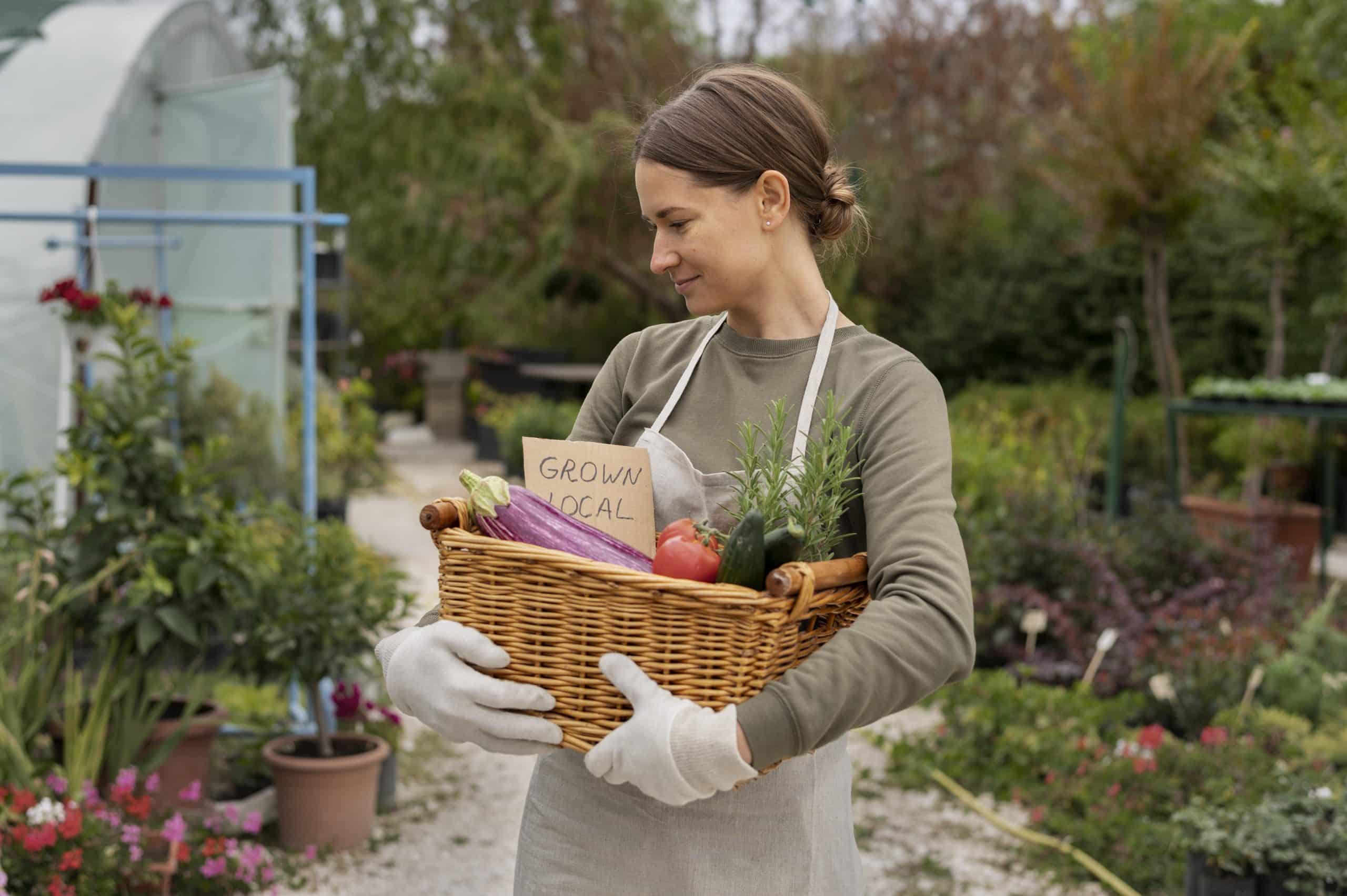Garden-to-table craft beer brewing tips for beginners


The Garden-to-table movement has taken root in kitchens worldwide, and now it’s spilling into the world of craft brewing.
Imagine transforming herbs, fruits, and vegetables from your own garden into refreshing, flavorful beers that reflect both your taste and your environment.
Brewing with homegrown ingredients not only boosts freshness but also creates a stronger connection between your garden and your glass.
Understanding garden-to-table brewing
To fully embrace Garden-to-table brewing, it’s essential to recognize the balance between cultivating ingredients and transforming them into flavorful craft beers.
This approach connects freshness, sustainability, and creativity, making each batch a reflection of your garden.
Benefits of Garden-to-table brewing
The advantages of Garden-to-table brewing go far beyond taste. Freshly harvested herbs, fruits, and hops deliver vibrant flavors that processed alternatives cannot match.
By using your own harvest, you ensure healthier choices while reducing dependence on industrial supply chains, lowering your carbon footprint, and contributing to local biodiversity.
This philosophy also empowers home brewers to experiment with unique pairings.
Whether you’re blending chamomile into a wheat beer or adding raspberries to a pale ale, Garden-to-table methods unlock possibilities that make each brew distinct and personal.
Key ingredients to grow for Garden-to-table brewing
Certain plants thrive in most home gardens and are particularly valuable for Garden-to-table recipes. Hops remain the cornerstone, providing both bitterness and aroma, while basil or mint add refreshing herbal notes.
Fruits such as apples, peaches, and berries bring natural sweetness and depth to your brews.
Timing is crucial, harvesting hops when cones are dry and papery or picking fruits at peak ripeness ensures maximum flavor. By carefully selecting and tending to these plants, you create a foundation for beers that showcase the essence of your garden.
Why Garden-to-table brewing stands out
Unlike conventional brewing, Garden-to-table techniques emphasize authenticity. Each sip tells the story of your soil, your climate, and your creativity.
This connection to origin mirrors trends seen in global breweries that are turning toward local sourcing and seasonal ingredients to redefine freshness.
For beginners, adopting this approach brings both satisfaction and a unique identity to their brewing journey.
Selecting the right ingredients from your garden
When brewing with a Garden-to-table mindset, ingredient selection is one of the most decisive steps for success. The freshness and quality of what you grow directly influence the taste, aroma, and overall identity of your craft beer.
By carefully planning your garden, you can create beers that highlight unique, seasonal flavors while reinforcing sustainability.
Key ingredients to consider in Garden-to-table brewing
Certain plants are staples for Garden-to-table brewing. Hops remain essential, providing both bitterness and complex aromas, and varieties adapted to your climate ensure better yields.
Herbs like basil, mint, and rosemary introduce herbal freshness that complements ales and lagers. Fruits such as raspberries, blueberries, or citrus enrich beers with natural sweetness, acidity, and vibrant color.
Even vegetables, like cucumbers or peppers, can create refreshing twists in lighter styles, adding originality to your recipes.
Aligning ingredients with brewing goals
Before deciding what to plant, think about the style of beer you want to achieve. A fruity wheat beer benefits from berries or peaches, while a bold IPA pairs well with mint or citrus peel.
If your goal is complexity, mixing herbs and spices from your garden can add layers of flavor.
Taking a Garden-to-table approach means planning ahead so that each harvest supports your brewing vision, whether you’re chasing floral, fruity, or spicy profiles.
Growing and harvesting tips for Garden-to-table brewing
Producing high-quality ingredients requires consistent care. Keep your soil enriched with organic fertilizers, water regularly, and prune plants to promote healthy growth. Monitoring for pests is equally important to protect yields.
Harvesting at the right stage maximizes flavor, hops should feel papery and aromatic when picked, while fruits must be gathered fully ripe to provide depth and balance.
Proper timing ensures that your Garden-to-table beers carry the purest expression of your garden.
Essential equipment for craft brewing at home

Having the right equipment is key to successful craft brewing at home. With the right tools, you can ensure that your brewing process goes smoothly and your final product is delicious.
Let’s dive into what essential equipment you really need to get started.
First, you need a good brewing kettle. It’s best to choose one that holds at least 5 gallons, which gives you flexibility for larger batches. A sturdy kettle ensures even heating and prevents scorching your ingredients.
Other Essential Equipment
Here are some more crucial items to consider:
- Fermentation Vessel: A glass carboy or a food-safe plastic bucket allows for fermentation without contamination.
- Airlock: This helps release gases during fermentation while keeping unwanted bacteria out.
- Hydrometer: Use this tool to measure the specific gravity of your beer, helping you determine alcohol content.
- Bottling Setup: A bottling wand and caps are needed to transfer your beer into bottles.
Don’t overlook quality ingredients and tools for cleaning. Keeping your equipment sanitized is as important as the brewing itself. Invest in a good sanitizer to avoid off-flavors in your beer.
Additional Accessories
Beyond the essentials, some additional tools can enhance your brewing experience. Consider adding a thermometer to monitor temperatures accurately during the brewing process.
A brewing scale can help with measuring hops and other ingredients precisely.
Lastly, don’t forget about a good recipe book or online resource. Whether you’re a beginner or have some experience, having recipes on hand can spark creativity in your brewing adventures.
Key brewing techniques for flavorful results
Understanding key brewing techniques is essential for achieving flavorful results. Each step in the brewing process plays a crucial role in the final taste and quality of your craft beer.
By mastering these techniques, you can elevate your home brewing game.
One important technique is mashing. During mashing, you combine your crushed grains with hot water. This process converts starches into fermentable sugars, laying a solid foundation for your beer’s flavor.
The temperature and duration of mashing can drastically affect the sweetness and body of your beer.
Boiling and Hops Addition
After mashing, you will boil the wort. Boiling serves multiple purposes, including sterilization and flavor extraction from hops. Adding hops at different times during the boil can change your beer’s taste and aroma.
- Early Addition: Adds bitterness to balance sweetness.
- Middle Addition: Contributes flavor without too much bitterness.
- Late Addition: Enhances aroma without additional bitterness.
Timing is crucial here—too much boiling can extract undesirable flavors, while not enough can leave your beer flat.
Fermentation Control
Fermentation is another vital step. Keeping a consistent temperature during fermentation helps produce a clean and consistent flavor profile. Yeast thrives at specific temperatures, so it’s essential to monitor and control this environment.
After your beer ferments, you might consider a process called dry hopping. This adds extra hop flavor without more bitterness, giving your beer a fresh and aromatic finish.
Simply add hops to your fermenter after the initial fermentation is complete and let it steep for a few days.
Troubleshooting common brewing issues
Troubleshooting common brewing issues is an important skill for every home brewer. Even with careful planning, things can go wrong during the brewing process.
Knowing how to identify and fix these issues can save you from wasting time and ingredients.
One common problem is off-flavors. These can stem from poor sanitation, incorrect fermentation temperatures, or bad ingredients. If your beer tastes sour or has unusual flavors, it’s crucial to examine your brewing practices.
Identifying Off-Flavors
Here are some typical off-flavors and their causes:
- Diacetyl: This buttery flavor may indicate that fermentation needs more time.
- Phenols: These can create a medicinal or band-aid taste, often from high fermentation temperatures.
- Oxidation: An off-putting cardboard flavor typically comes from exposure to air during bottling.
Each of these flavors offers clues about improvements needed in the brewing process. Keeping a brewing log can help you track down issues and see patterns in your brewing.
Common Brew Problems
Other common issues include stuck fermentation and insufficient carbonation. A stuck fermentation may occur if yeast becomes inactive, possibly due to low temperatures or lack of nutrients.
If you encounter this, warming the fermenter slightly can help, as well as adding yeast nutrients. Insufficient carbonation often results from not enough priming sugar during bottling.
Ensure you measure carefully to achieve the right level of carbonation.
Regularly checking your equipment and maintaining proper sanitation is crucial for avoiding these problems.
Clean everything thoroughly before brewing and ensure your bottles are properly sanitized. With practice, you will learn to spot problems early and make the necessary adjustments.
Pairing your home brew with garden-fresh dishes

Pairing your home brew with garden-fresh dishes can enhance your overall dining experience. When you combine your craft beer with meals made from ingredients straight from your garden, you create a delightful harmony of flavors.
This connection not only enhances your brewing journey but also showcases the freshness of your produce.
Start by considering the main flavor profiles in your brew. Is it fruity, hoppy, or malty? Knowing this will help you find the best dishes to complement it. For instance, light, citrusy beers work well with salads and light seafood dishes.
Recommendations for Pairing
Here are a few great pairing ideas:
- Hoppy IPAs: These pair nicely with spicy dishes like Thai food or grilled chicken, enhancing the flavors of both.
- Strong Ales: Rich, malty beers complement hearty meals such as chili or beef stew, balancing the depth in both.
- Wheat Beers: These light beers go well with fresh salads and vegetable dishes, highlighting the freshness of your garden ingredients.
- Fruity Beers: Beers like fruit lambics are great with desserts, especially those that feature berries or citrus fruits.
When planning your meal, think about how the flavors can blend together. Using fresh ingredients from your garden not only makes your dishes vibrant but also encourages a sustainable lifestyle. Each pairing can turn into a unique culinary adventure, making each meal special.
Experimenting with Flavors
Don’t be afraid to experiment! Try different pairings and note what works best for your palate. This journey of pairing is a fun way to discover new tastes and enhance your brewing skills.
You might find that a certain combination becomes your new favorite.
With creativity, you can transform a simple meal into a gourmet experience, all while savoring the fruits of your labor from your own garden.
Conclusion: Why Garden-to-table brewing matters
Adopting a Garden-to-table approach in craft beer brewing is more than just a hobby—it’s a way to reconnect with nature, explore creativity, and add authenticity to every batch you create.
By using fresh herbs, fruits, and vegetables directly from your garden, you craft beers with flavors that are vibrant, unique, and deeply personal.
This practice not only enhances taste but also aligns with sustainable living, reducing your reliance on processed ingredients.
The beauty of Garden-to-table brewing lies in its versatility.
Whether you’re growing hops to experiment with bitterness, cultivating basil or mint for herbal notes, or incorporating fruits like raspberries and peaches for sweetness, every ingredient transforms into a signature expression of your garden.
With the right equipment, clean techniques, and consistent care, your brewing process becomes a reflection of your dedication to freshness and quality.
On a broader scale, the popularity of Garden-to-table practices is reshaping how communities enjoy beer.
According to Craft Beer Joe, summer beer gardens increasingly emphasize locally sourced ingredients, turning casual gatherings into celebrations of sustainability.
Similarly, Rambling Feet points out how innovative breweries worldwide are building reputations by integrating fresh, seasonal harvests into their brewing.
These examples prove that Garden-to-table brewing is more than a trend, it’s part of a cultural movement that values transparency, flavor, and connection.
Ultimately, embracing Garden-to-table brewing allows you to elevate your craft while contributing to a larger shift toward sustainable and community-driven food and drink culture.
Each sip becomes a reminder that great beer begins not in the brewery, but in the garden.
FAQ – Frequently Asked Questions About Home Brewing and Pairing
What are the benefits of using garden-fresh ingredients in brewing?
Using garden-fresh ingredients enhances the flavor of your beer and makes your brewing experience more sustainable and personal.
How do I troubleshoot off-flavors in my beer?
Identify the specific off-flavor and its cause, which can stem from issues like poor sanitation, incorrect fermentation temperatures, or bad ingredients.
What types of dishes pair well with my home brew?
Pair your brews with garden-fresh salads, grilled dishes, or even desserts. Consider flavor profiles to create harmonious combinations.
How can I experiment with different flavor pairings?
Try various combinations of your brews and dishes, keeping notes on what works best. This will help you discover new and enjoyable pairings.
Liked the article?





